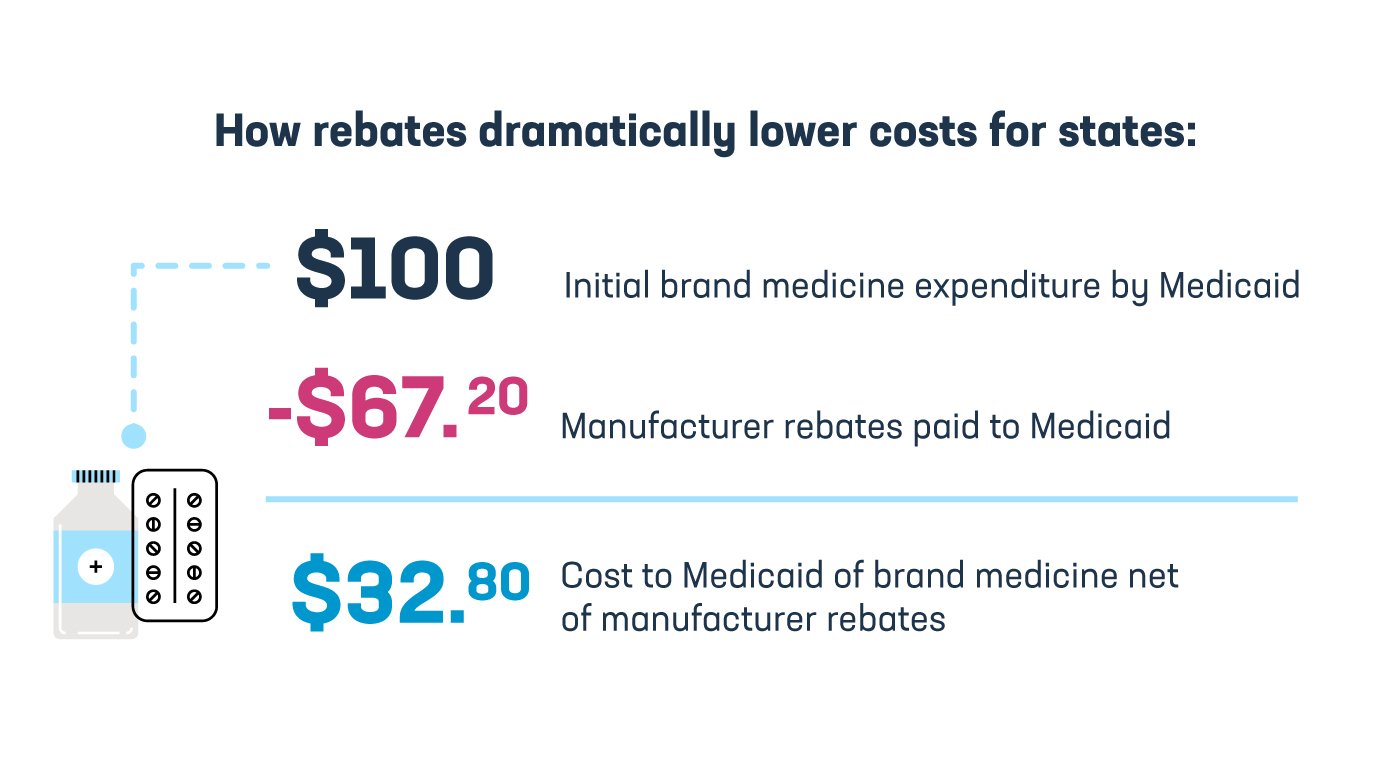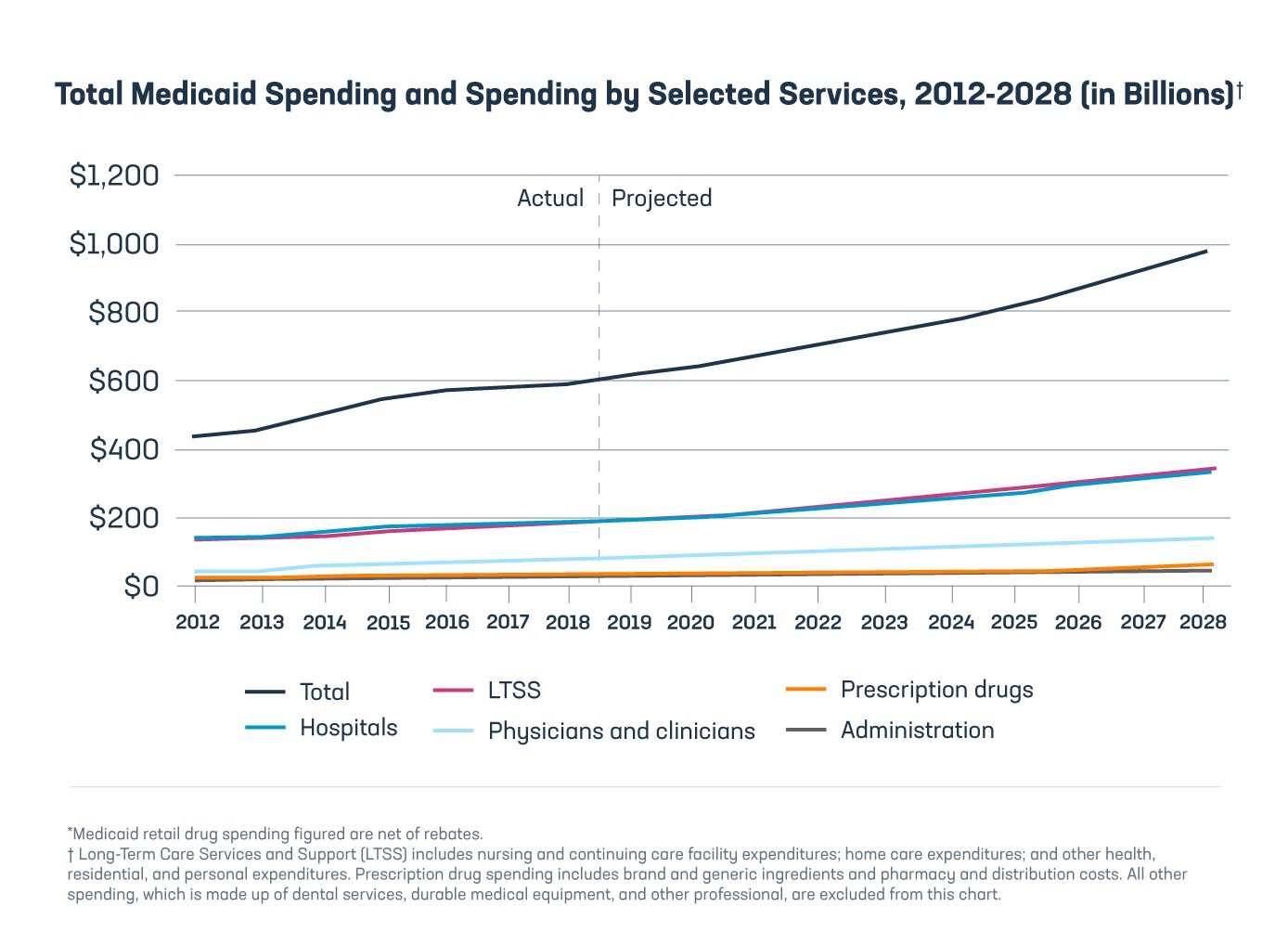Medicaid 101: Three charts on access and spending
Medicaid is an important program, providing coverage for millions of Americans.

Medicaid 101: Three charts on access and spending.
Medicaid is an important program, providing coverage for millions of Americans.

Medicaid 101: Three charts on access and spending.
Did you know Medicaid and the Children’s Health Insurance Program provide health coverage for more than 83 million vulnerable Americans, including children and their parents, pregnant women, the elderly and people living with disabilities? This state-federal partnership provides Americans across the country with access to needed medications with low to no cost sharing. Here are three facts about Medicaid that you may not know.
1. Manufacturers pay statutory rebates to help ensure patients have affordable access to medicines. Manufacturers work with the federal government to provide significant discounts on medicines to ensure people with Medicaid have access to lifesaving and life-altering medicines. Under the Medicaid Drug Rebate program, manufacturers pay steep statutory rebates which provide the “best price” among payers to states for medicines. In exchange, Medicaid is required to cover generally all “medically accepted indications” of covered outpatient medicines. Rebates from manufacturers increase as Medicaid enrollment grows, helping offset the costs to states providing access to prescription medicines. For example, in 2019 manufacturers paid Medicaid rebates totaling $36.1 billion to states and the federal government.

2. Spending on retail medicines is a small share of total Medicaid spending, in large part because of the support manufacturers provide through rebates. Retail medicines account for just over 4% on average. Comparatively, administrative costs represent roughly 6% of total Medicaid budgets on average and about 54% of Medicaid spending is on hospital and nursing facilities, which could include some medicines provided in the hospital.
For example, in 2018 net Medicaid retail medicine spending (including on brand medicines and generics) was $33.4 billion, while total Medicaid spending was $597.4 billion. Even projections for 2028 suggest Medicaid retail medicine spending will continue to be a small share of total Medicaid spending.

3. Some states are limiting access to brand medicines in Medicaid despite the agreement between manufacturers and states to provide rebates in exchange for robust prescription medicine coverage. All states currently provide prescription medicine coverage but may rely on preferred drug lists to control which medicine patients can get. Other states limit how many prescriptions patients can fill each month.
This is especially critical because Medicaid patients, compared to those with other types of insurance, often have more complex and chronic health conditions that often require access to a broad range of medicines. Policies that limit access to medicines in Medicaid, such as restrictions on what medicines are available and one-size-fits all value assessments on medicines, could put millions of people at risk, lead to poorer health outcomes for already vulnerable populations, and contribute to higher costs across the health care system.

Medicaid is an important program, providing coverage for millions of Americans. Access restrictions drive up costs for patients, which is counter to the goals of the Medicaid program. Policymakers should take steps to protect patient access to medicines through Medicaid.